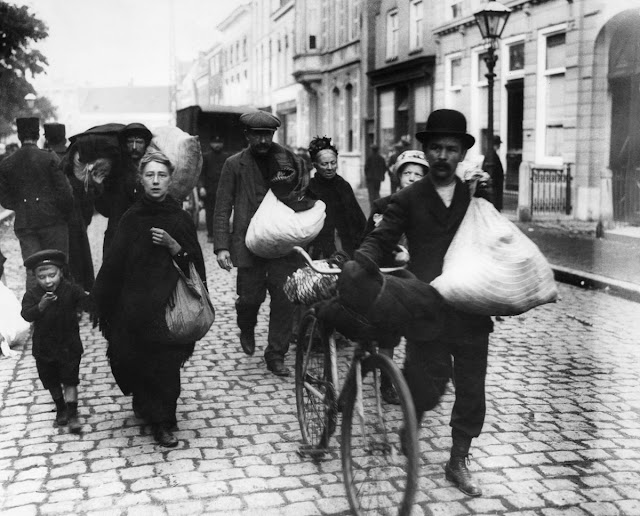In Belgium, the outbreak of the First World War and subsequent German invasion caused massive population movements. Hundreds of thousands of Belgian refugees fled the country to seek asylum in the Netherlands, France or Great Britain. The total number of Belgian civilians who settled abroad during the First World War may reasonably be put at around 600,000 or some 8 percent of the Belgian population at that time.
The proclamation of the armistice in November 1918 gave rise to great expectations among the refugees, the vast majority of whom were clearly impatient to return to their families and property after years of absence. By July 1919, most of the Belgians who had taken refuge in the Netherlands had returned home; very few decided to remain permanently. The British authorities, deeply concerned with the impending economics crisis threatening to engulf the country, immediately took measures to repatriate the refugees. By mid-1919, almost all Belgians who had resided in Britain had left the country. France, bled dry by four year of war, did not view the repatriation of Belgian refugees as a pressing issue. A few thousand settled permanently in France, especially in Normandy, where many were granted fertile farmland. All in all, however, almost all of the hundreds of thousands of Belgian refugees returned to their homeland after the war.
After the war, many refugees were met with indifference or even hostility. Some were treated as cowards. Many considered them privileged people or deserters who had failed to demonstrate sufficient courage in the face of the enemy. Their contribution to the war effort was judged marginal at best. This was evident in the commemorations organized after the war. There was no place for refugees in the Belgian memory of the war. As a result, Belgian historians and citizens rapidly forgot the refugees’ war experience.
 |
| Belgian refugees arrive in the Netherlands, 1914. |
 |
| Belgian refugees carry their belongings ahead of invading troops through Northern France, 1914. |
 |
| Belgian refugees on the harbour at Ostend waiting for a boat to take them to England, 1914. |
 |
| Belgian refugees read Flemish messages left by other refugees in a French town, 1915. |
 |
| A group portrait of the managers and workers in the Belgian Munition Works in London, which employed Belgian refugees to manufacture grenades and artillery shells for the war effort, September 1918. |
 |
| Belgian refugees manufacture artillery shells at the Belgian Munition Works in London, September 1918. |
 |
| Belgian refugee women use lathes to make ammunition casings at the Belgian Munition Works in London, September 1918. |
 |
| Belgian refugees outside the Belgian Munition Works in London, where they were employed to manufacture explosives for the war effort, September 1918. |
 |
| Belgian refugees arrive in the Welsh town of Rhyl, 1914. |
 |
| A group of young refugees in London, 1914. |
 |
| Refugees in London, 1914. |
 |
| Belgian refugees in a Kensington workhouse, July 1914. |
 |
| Belgian refugees sleep in a barn in France on Christmas Eve, Dec. 24, 1914. |
 |
| Belgian refugees in London celebrate Independence Day, 1915. |
 |
| Belgian refugee soldiers in their camp at Hyde near Manchester, Sept. 1, 1915. |
(Photos: Getty Images)























0 comments:
Post a Comment